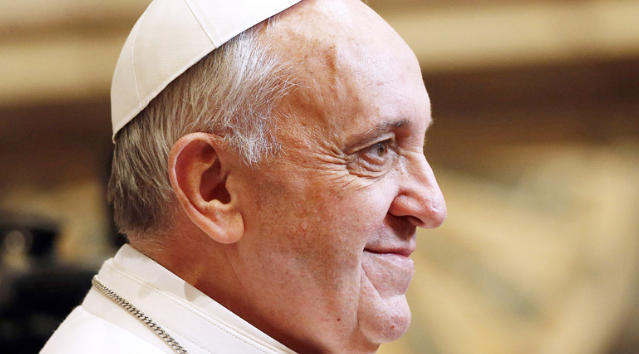Science Policy Group at Berkeley
In collaboration with the Areces Foundation and the AEEE, Economics for Energy organizes an academic workshop devoted to the state-of-the-art analysis and debate on topics of interest for the center with a small number of presentations provided by leading researchers in the field. The workshop will take place on February 15th (from 10.00 to 13.30) and targets researchers in the fields of energy and environmental economics. Those interested in participating in the workshop should send an email to info@eforenergy.org. 19:00: Seminar by Daniel Kammen in Madrid: "Open Session: The Science and Policy of Sustainable Energy"
For the original link, August 8, 2022, click here. https://www.popsci.com/environment/chips-ira-climate-change-policy/ Bt Thor Benson, for Popular Science For the past few weeks, climate action in the US appeared to have a bleak outlook. But things are looking to change with the passage and introduction of two new groundbreaking bills. Congress passed a bill called the CHIPS and Science Act on July 28th to boost domestic semiconductor production and fund scientific research. The Senate also just passed an expansive bill called the Inflation Reduction Act (IRA). Both bills would do quite a bit to help the US fight climate change—much to the relief of many Democrats in Congress worried about getting climate legislation passed before the midterms. But with so much legislation floating around, keeping track of each bill’s actions can be tricky. Here’s what you need to know about climate change policies in the IRA and CHIPS act.
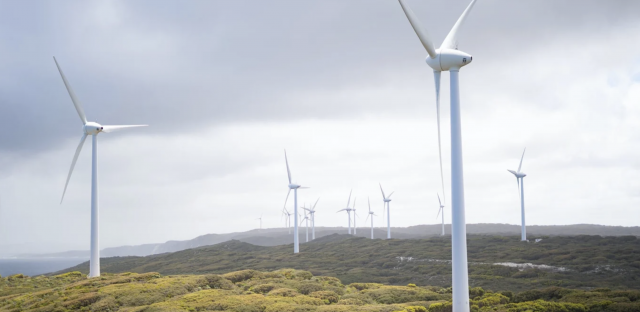 The Inflation Reduction Act includes roughly $369 billion for climate programs, meaning, if passed, it could be the most significant climate bill Congress has ever passed. The bill offers tax incentives to companies to increase the production of wind, solar, and battery technologies. Additionally, the bill limits the amount of methane a US company can emit, which is crucial because methane is a potent greenhouse gas.
As for ordinary folks, the bill offers a $7,500 tax credit toward purchasing a new electric vehicle and a $4,000 tax credit toward purchasing a used one and more. This is important because electric cars are better for the climate than gasoline-powered vehicles. But, it may have the bonus of convincing car manufacturers to keep building more electric vehicles and could increase the building of charging stations.
“Whether you’re on the EV side, whether you’re on the stationary green power side, seeing them all in the same bill is critically important,” Daniel Kammen, a professor of energy at the University of California, Berkeley. “It messages that $369 billion is being spent in a holistic way.”
A report from the Rhodium Group, an independent research firm, found the IRA would reduce greenhouse gas emissions by 31 to 44 percent from 2005 levels by 2030. Greenhouse gas emissions peaked countrywide in 2005, but since then, carbon emissions have shrunk by 20 percent. The Biden administration has set a goal of reducing emissions by 50 percent from 2005 levels by 2030—so the IRA would provide a significant boost.
Current projections show the IRA wouldn’t get us to the Biden administration’s climate goals by itself, but Kammen feels that the effects of it passing could “snowball.” He says that the initial investment could spur further investments and breakthroughs to help us reach or exceed planned emission reductions.
The Inflation Reduction Act includes roughly $369 billion for climate programs, meaning, if passed, it could be the most significant climate bill Congress has ever passed. The bill offers tax incentives to companies to increase the production of wind, solar, and battery technologies. Additionally, the bill limits the amount of methane a US company can emit, which is crucial because methane is a potent greenhouse gas.
As for ordinary folks, the bill offers a $7,500 tax credit toward purchasing a new electric vehicle and a $4,000 tax credit toward purchasing a used one and more. This is important because electric cars are better for the climate than gasoline-powered vehicles. But, it may have the bonus of convincing car manufacturers to keep building more electric vehicles and could increase the building of charging stations.
“Whether you’re on the EV side, whether you’re on the stationary green power side, seeing them all in the same bill is critically important,” Daniel Kammen, a professor of energy at the University of California, Berkeley. “It messages that $369 billion is being spent in a holistic way.”
A report from the Rhodium Group, an independent research firm, found the IRA would reduce greenhouse gas emissions by 31 to 44 percent from 2005 levels by 2030. Greenhouse gas emissions peaked countrywide in 2005, but since then, carbon emissions have shrunk by 20 percent. The Biden administration has set a goal of reducing emissions by 50 percent from 2005 levels by 2030—so the IRA would provide a significant boost.
Current projections show the IRA wouldn’t get us to the Biden administration’s climate goals by itself, but Kammen feels that the effects of it passing could “snowball.” He says that the initial investment could spur further investments and breakthroughs to help us reach or exceed planned emission reductions.
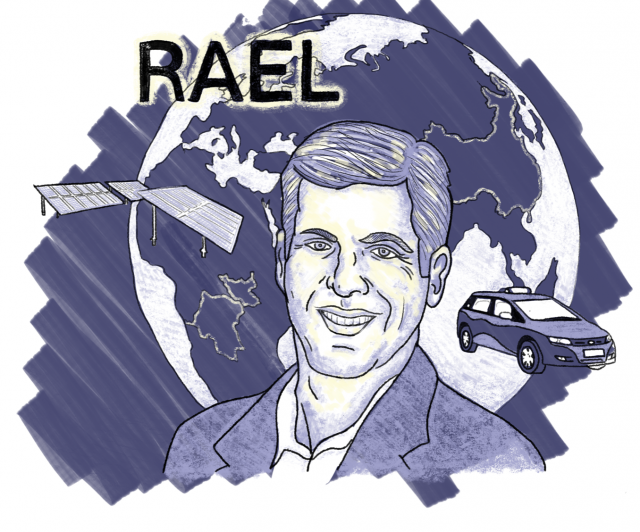 Dr. Daniel Kammen has had a long and illustrious career defined by his commitment to expanding clean energy worldwide. He originally became interested in clean energy as a postdoc working on wind and solar projects in Nicaragua and El Salvador in the mid-1980s. His research led to a faculty position at Princeton until 1999, when he joined UC Berkeley. Here, he founded and leads the Renewable and Appropriate Energy Laboratory (RAEL), whose work includes identifying novel materials for solar panels and batteries, building computational models of regional energy systems to identify opportunities for renewable energy, and implementing energy policy.
Although RAEL’s research has resulted in hundreds of academic papers, Kammen cares deeply about having a real-world impact. He is particularly proud of RAEL’s projects in Africa, as they not only address climate change but also increase peoples’ access to energy. One project installs mini solar grids in war-torn areas like South Sudan and the Democratic Republic of Congo. These installations provide renewable energy to power critical infrastructure, like health clinics and women’s centers. What started out as an academic exercise in his lab is now a way for companies to buy Peace Renewable Energy Credits, an internationally traded virtual commodity that provides a revenue stream for developers of renewable energy projects and offers companies a way to finance impactful projects in these countries. Outside of Africa, RAEL’s other projects include electrifying 30 thousand taxis in China, defeating a large coal project in Malaysian Borneo, and using Google data from 60 million rooftops to show the massive amount of social inequality in solar panel usage.
When Kammen isn’t helping communities around the world transition to clean energy, he’s staring out into space. He says, “I have some pretty cool telescopes. I do a lot of deep space photography, looking at exoplanets and planets around other stars.” Clearly Kammen cares about planets, whether it’s discovering new ones or saving ours.
For the original: click here.
Or:
https://berkeleysciencereview.com/article/2021/11/30/faculty-profile-daniel-kammen
Dr. Daniel Kammen has had a long and illustrious career defined by his commitment to expanding clean energy worldwide. He originally became interested in clean energy as a postdoc working on wind and solar projects in Nicaragua and El Salvador in the mid-1980s. His research led to a faculty position at Princeton until 1999, when he joined UC Berkeley. Here, he founded and leads the Renewable and Appropriate Energy Laboratory (RAEL), whose work includes identifying novel materials for solar panels and batteries, building computational models of regional energy systems to identify opportunities for renewable energy, and implementing energy policy.
Although RAEL’s research has resulted in hundreds of academic papers, Kammen cares deeply about having a real-world impact. He is particularly proud of RAEL’s projects in Africa, as they not only address climate change but also increase peoples’ access to energy. One project installs mini solar grids in war-torn areas like South Sudan and the Democratic Republic of Congo. These installations provide renewable energy to power critical infrastructure, like health clinics and women’s centers. What started out as an academic exercise in his lab is now a way for companies to buy Peace Renewable Energy Credits, an internationally traded virtual commodity that provides a revenue stream for developers of renewable energy projects and offers companies a way to finance impactful projects in these countries. Outside of Africa, RAEL’s other projects include electrifying 30 thousand taxis in China, defeating a large coal project in Malaysian Borneo, and using Google data from 60 million rooftops to show the massive amount of social inequality in solar panel usage.
When Kammen isn’t helping communities around the world transition to clean energy, he’s staring out into space. He says, “I have some pretty cool telescopes. I do a lot of deep space photography, looking at exoplanets and planets around other stars.” Clearly Kammen cares about planets, whether it’s discovering new ones or saving ours.
For the original: click here.
Or:
https://berkeleysciencereview.com/article/2021/11/30/faculty-profile-daniel-kammen
For the original in Science, click here.
Like most universities in China, the campus of Huazhong University of Science and Technology in Wuhan is deserted.

The coronavirus epidemic now racing across China is forcing Jeffrey Erlich, a Canadian neuroscientist at New York University Shanghai, to weigh his science against concern for his staff. Erlich performs animal experiments at a neighboring university; as part of efforts to control the illness, known as COVID-19, officials there have asked him to halt the studies and use as few staff as possible to take care of his animals. But he is training mice and other species on very complex tasks; the interruption could set him back 6 to 9 months. “It's really hard balancing the research productivity of the lab and the safety and comfort of my staff,” he says. “When you've invested years of work into experiments, where do you draw the line about what's considered essential?”
Erlich is just one of thousands of scientists in China whose work is suffering. Universities across the country have been closed since the Lunar New Year, 25 January. Access to labs is restricted, and projects have been mothballed, fieldwork interrupted, and travel severely curtailed. Scientists elsewhere in the world are feeling the impact as well, as collaborations with China are on pause and many scientific meetings, some as far away as June, have been canceled or postponed.
The damage to research pales compared with the human suffering wrought by the virus. As Science went to press, the total number of cases had risen to 73,332, almost 99% of them in China, and 1873 deaths had been counted; the specter of a pandemic is still very real. Still, for individual researchers the losses can be serious—and stressful. “Basically, everything has completely stopped,” says John Speakman, who runs an animal behavior lab at the Chinese Academy of Sciences (CAS) in Beijing. “The disruption is enormous. The stress on the staff is really high.” But Speakman says he understands why the Chinese government closed universities and institutes. “It's annoying, but I completely support what they have done,” he says.
Disruptions are particularly acute in Wuhan and other cities in Hubei province, the epicenter of the outbreak, which are almost completely cut off from the outside world. “I'm working more now than ever before the epidemic,” says Sara Platto, a professor of animal behavior at Jianghan University in Wuhan. But she faces major obstacles: Faculty and students living on campus are confined to their apartments, and Platto, who lives off-campus, can venture outside only once every 3 days. She is working with colleagues in Beijing who are studying the relationship of the novel virus to another coronavirus isolated from a pangolin. But a paper she is writing has been delayed because her notes are in her office and she can't get back on campus.
The situation is not much better in other cities. “Unfortunately, the virus is very annoying with regards to work,” says Jingmai O'Connor, a paleontologist at CAS's Institute for Vertebrate Paleontology in Beijing. “There is no one working the collection, no one to sign paperwork so things can't get done, overseas travel is canceled. … No samples can be analyzed, all we can do is work on preexisting data on our computers,” O'Connor says. “It sucks!”
Some researchers in China have switched from lab work to writing papers and grant applications. The National Science Foundation of China has postponed grant application deadlines by several weeks, giving researchers time to catch up. Online classes, which many universities and institutes have ramped up to keep students on schedule, are also keeping scientists busy. Poo Muming, a neuroscientist at CAS's Center for Excellence in Brain Science and Intelligence Technology, says he is teaching daily 2-hour neurobiology lectures: “Surprisingly, there are thousands of people tuning in each day.”
China's lockdown is felt even half a world away. Daniel Kammen, a renewable energy researcher at the University of California, Berkeley, says it is impeding his lab's efforts to help set up green transportation projects, including the rollout of electric taxis, throughout China.
But labs working on the fight against COVID-19 are in overdrive. At Tsinghua University in Beijing, Zhang Linqi has switched from HIV to the novel coronavirus; his lab members even decided to forgo the Lunar New Year celebrations last month. “[We] decided we would celebrate it by conducting research,” Zhang says. The team synthesized and characterized the “spike” on the coronavirus's surface, a protein that helps it enter human cells; Zhang's lab has joined industrial partners to develop a vaccine targeting the spike. Countless infectious disease labs in the rest of the world have put their regular work on hold as well. “The main effect has been the need to triage work, to push other projects to the back burner while we help our Chinese colleagues analyze the vast amount of new COVID-19 data,” says Christopher Dye of the University of Oxford.
The spread of the virus has upended plans for numerous scientific conferences. So far, more than a dozen have been canceled or postponed—not just in China but elsewhere in Asia and Europe as well. Among the casualties are the International Society for Stem Cell Research's international symposium, which was scheduled for March in Shanghai, and the 2nd Singapore ECS Symposium on Energy Materials in early April. Organizers of the International Congress on Infectious Diseases, planned for 20–24 February in Kuala Lumpur, Malaysia, postponed their meeting, saying the priority for its registrants is to fight the coronavirus outbreak in their home countries.
Concern is also rising that the epidemic could disrupt the global medicine supply. China and India produce an estimated 80% of all active pharmaceutical ingredients, the raw materials for antibiotics and drugs for cancer, heart disease, and diabetes. With many Chinese factories shuttered, stockpiles could run short. “This is a very acute issue now,” says Michael Osterholm, the head the Center for Infectious Disease Research and Policy at the University of Minnesota, Minneapolis, which studies drug availability.
But Mariângela Simão, assistant director general for access to medicines and health products at the World Health Organization, says the agency sees no “immediate risk” of COVID-19 affecting supplies of essential medicines. Simão's team is in daily contact with international pharmaceutical associations, which track shipping disruptions from their member companies. Many companies stockpiled 2 to 4 months of their products prior to the Lunar New Year celebrations, she says. And while Hubei is home to some pharmaceutical companies, far more are in Shanghai and other parts of China that are less affected. But the picture could change if the virus isn't brought under control, Simão notes. “It will all depend on how the situations evolve with the outbreak.”
* With reporting by Dennis Normile, Gretchen Vogel, Jon Cohen, and freelance journalist Rebecca Kanthor in Shanghai.
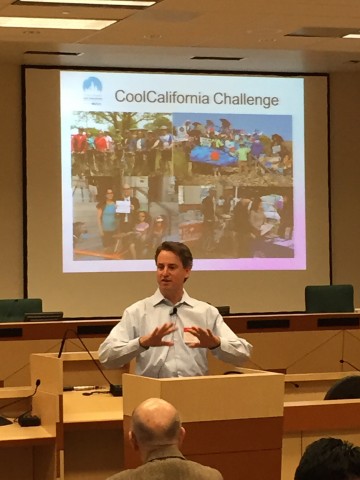 The climate crisis is upon us. At this point there is little chance of meeting global, national and local climate targets. At best, our collective efforts will prevent some of the worst consequences of climate change from happening this century. This reality leaves many of us in an existential crisis. Will we look back on our lives and think that we’ve done enough?
The climate crisis is upon us. At this point there is little chance of meeting global, national and local climate targets. At best, our collective efforts will prevent some of the worst consequences of climate change from happening this century. This reality leaves many of us in an existential crisis. Will we look back on our lives and think that we’ve done enough?
Meet the Laos Energy Modeling and Policy Analysis (Undergraduate!) Team:
The focus of this inter-disciplinary and inter-university research group is to develop sustainable energy, water, and land-use scenarios for Laos, and to work with local stake-holders on the costs and benefits for communities, the nation, and the regional commerce in energy, water, food, timber and other commodities.
Aaditee Kudrimoti
 Bio: Aaditee is a fourth-year at UC Berkeley studying political science and public policy with a concentration in energy, development, and international relations. Aaditeeis originally from Tucson, Arizona, where she began to develop an interest in international environmental affairs. At UC Berkeley, Aaditeeis working on projects in the political economy of Chinese development finance, rural electrification, and collective action. Aaditeehas become especially interested in how the rise of renewable technology is influencing energy diplomacy around the world. She hopes to pursue a career in academia and public policy and work on governance tools to build the bargaining capacity of LDCs against MNCs, foreign state-owned enterprises, etc. on the subject of FDI and other types of investment. She sees SWITCH-Laos as having the potential to serve as a critical tool in assisting the increase of the Lao people’s bargaining power over FDI in the energy sector and thus their autonomy in determining their own economic development. Outside school, Aaditee’s interests include dance, food journalism, and cooking.
Alex Lathem
Bio: Aaditee is a fourth-year at UC Berkeley studying political science and public policy with a concentration in energy, development, and international relations. Aaditeeis originally from Tucson, Arizona, where she began to develop an interest in international environmental affairs. At UC Berkeley, Aaditeeis working on projects in the political economy of Chinese development finance, rural electrification, and collective action. Aaditeehas become especially interested in how the rise of renewable technology is influencing energy diplomacy around the world. She hopes to pursue a career in academia and public policy and work on governance tools to build the bargaining capacity of LDCs against MNCs, foreign state-owned enterprises, etc. on the subject of FDI and other types of investment. She sees SWITCH-Laos as having the potential to serve as a critical tool in assisting the increase of the Lao people’s bargaining power over FDI in the energy sector and thus their autonomy in determining their own economic development. Outside school, Aaditee’s interests include dance, food journalism, and cooking.
Alex Lathem
 Bio: Alex Lathem is a third-year undergraduate at Yale University. He is a physics major with several years of experience using programming languages, including Python SQL, C, and Bash, to analyze scientific data. Previous research projects Alex has worked on include astrometry of near-Earth asteroids and the creation of a Hubble curve through the analysis of Type Ia supernovae. Alex spent the summer of 2019 working on the SWITCH model for China, and is very excited to apply the skills he learned there to a version for Laos. Outside of research, Alex is also interested in music, video game design, linguistics, and history.
Ashley Yip
Bio: Alex Lathem is a third-year undergraduate at Yale University. He is a physics major with several years of experience using programming languages, including Python SQL, C, and Bash, to analyze scientific data. Previous research projects Alex has worked on include astrometry of near-Earth asteroids and the creation of a Hubble curve through the analysis of Type Ia supernovae. Alex spent the summer of 2019 working on the SWITCH model for China, and is very excited to apply the skills he learned there to a version for Laos. Outside of research, Alex is also interested in music, video game design, linguistics, and history.
Ashley Yip
 Bio: Ashley is a second-year undergraduate studying environmental science with an emphasis in global politics. She moved to New Mexico, where she developed an interest in environmental affairs. At UC Berkeley, she is involved in a pre-law association that helped her explore her interest in law and how she may integrate that into environmentalism. Off campus, she is working on a sex education reform project in Singapore with the Ministry of Education. She is constantly exploring the intersection between policy, education, and the environment. She hopes to return home to Singapore and pursue a career in international environmental policy or law within Southeast Asia. Ashley chose to work on SWITCH-Laos not only because greening ASEAN's economic development is essential to tackling climate change, but also because she is familiar with the demographic. She has done research in regards to both urban and rural agriculture in Asia and the US, and led research for environmental management in business operations. Outside of school, her interests include climbing, hiking, piano, and camper vans.
Rachel Ng
Bio: Ashley is a second-year undergraduate studying environmental science with an emphasis in global politics. She moved to New Mexico, where she developed an interest in environmental affairs. At UC Berkeley, she is involved in a pre-law association that helped her explore her interest in law and how she may integrate that into environmentalism. Off campus, she is working on a sex education reform project in Singapore with the Ministry of Education. She is constantly exploring the intersection between policy, education, and the environment. She hopes to return home to Singapore and pursue a career in international environmental policy or law within Southeast Asia. Ashley chose to work on SWITCH-Laos not only because greening ASEAN's economic development is essential to tackling climate change, but also because she is familiar with the demographic. She has done research in regards to both urban and rural agriculture in Asia and the US, and led research for environmental management in business operations. Outside of school, her interests include climbing, hiking, piano, and camper vans.
Rachel Ng
 Bio: Rachel is a second-year Environmental Science and Data Science major. A Singapore-native, Rachel describes that SWITCH-Laos extremely important to her because it is an important step towards the energy security of Southeast Asia. She believes that the sustainable electrification of Southeast Asia is key to regional grid stability and energy trade. She is pursuing SWITCH-Laos as critical in leading the way towards sustainable electrification. Rachel is interested in the intersectionality between climate change and community, exploring how community based issues caused by climate change can be alleviated through data. Furthermore, Rachel is currently concerned about equal access to education and volunteers weekly as a mentor to elementary school students. In the future, she hopes to return to Singapore and guide environmental change through creating an ecosystem of sustainable communities and businesses. Her hobbies include dance, rock climbing and water sports.
Bio: Rachel is a second-year Environmental Science and Data Science major. A Singapore-native, Rachel describes that SWITCH-Laos extremely important to her because it is an important step towards the energy security of Southeast Asia. She believes that the sustainable electrification of Southeast Asia is key to regional grid stability and energy trade. She is pursuing SWITCH-Laos as critical in leading the way towards sustainable electrification. Rachel is interested in the intersectionality between climate change and community, exploring how community based issues caused by climate change can be alleviated through data. Furthermore, Rachel is currently concerned about equal access to education and volunteers weekly as a mentor to elementary school students. In the future, she hopes to return to Singapore and guide environmental change through creating an ecosystem of sustainable communities and businesses. Her hobbies include dance, rock climbing and water sports.
To access the article, click here.
The Beautiful Rivers—And the Dammed
Advances in solar and wind power mean that hydropower is no longer the only renewable game in town—and that’s good news for the world’s rivers.
BY JEFF OPPERMAN, CHRIS WEBER, DANIEL KAMMEN
NOVEMBER 23, 2018, 9:05 AM
Foreign Policy - https://foreignpolicy.com/2018/11/23/the-beautiful-rivers-and-the-dammed/
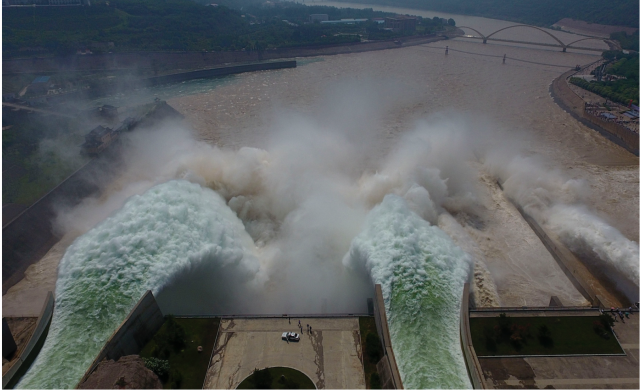 Figure: Water is released from the floodgates of the Xiaolangdi dam on the Yellow River near Luoyang, China on June 29, 2016. (STR/AFP/Getty Images)
In October, the Intergovernmental Panel on Climate Change released a report outlining strategies the world can pursue to keep global warming below 1.5 degrees Celsius and maintain healthy economies and ecosystems. But unless we are smart about how we implement that blueprint, it could cause irreparable damage to the world’s great rivers.
The panel’s report urges a rapid transition to low-carbon, renewable sources of electricity. That call to action could trigger expanded investment in hydropower, which is currently the world’s main source for that kind of energy (70 percent as of 2017). But if that development follows the pattern of earlier dam-building, it could accelerate an alarming loss of rivers and their resources, including of the fish that feed hundreds of millions of people.
The case of the Mekong River puts the problem into sharp relief. The river is the world’s most productive freshwater fishery—it provides nearly 20 percent of the annual global freshwater fish harvest, the primary source of protein for tens of millions of people in the region. Already, several hydropower dams on the Mekong are under construction or are moving through the planning process. Scientists estimate that those dams, if completed, will cut the river’s annual harvest by half.
With the Mekong Delta’s sand supply cut off, scientists project that it will sink and shrink, with more than half underwater by the end of the century.
The dams are also projected to trap within their reservoirs more than 90 percent of the sand that would otherwise flow into the Mekong Delta, which is home to 17 million people and produces 90 percent of Vietnam’s rice exports. With its sand supply cut off, scientists project that the delta will sink and shrink, with more than half underwater by the end of the century.
It is easy to hear such stories and conclude that the world faces an agonizing dilemma: Must we sacrifice our rivers to save our climate? Even just a few years ago, that trade-off seemed unavoidable. With wind and solar power limited by their expense and variability, global hydropower was projected to nearly double by 2050. Massive dams were under construction or planned for many of the world’s great rivers, including the Yangtze, Mekong, and most tributaries of the Amazon. Some governments used climate and renewable energy objectives to justify these projects, even as scientists quantified their impacts and affected communities and indigenous groups protested.
But we do not need to sacrifice rivers for zero-carbon energy. In the last two years, solar energy has rapidly become more economically viable due to technological improvements and to economies of scale in production and deployment. Whereas solar energy used to cost 20 cents or more per kilowatt-hour, new projects in Chile, Mexico, and Saudi Arabia have come in at one-tenth that cost. Wind energy costs have likewise plummeted. In 2017, a winning bid for a new wind farm in Mexico featured costs of around 2 cents per kWh. That was half the previous year’s lowest bid there. This makes solar and wind the price leaders across much of the world.
Even with falling costs, the variability of wind and solar power remain a challenge. Simply put, in order for these technologies to offer reliable, round-the-clock electricity generation, there needs to be a way to store power when the wind is blowing and the sun is shining and then deploy it when the wind dies down or the sun sets.
Fortunately, the costs for storage technologies are plummeting as well, with the cost of lithium ion batteries, capable of grid-scale storage, dropping by about 90 percent over the past few years. New technologies are emerging as well. For example, a Chilean solar power plant that uses molten salt as storage recently offered to provide 24-hour baseload electricity at less than 5 cents per kWh. That is comparable to or cheaper than most hydropower and fossil fuel options. Tesla and Google X, meanwhile, are pursuing “moonshot” solutions for storage technologies.
Also tipping the scales toward wind and solar is that, among large infrastructure projects, hydropower dams have among the worst performance in terms of delays and cost overruns, in part due to the conflict and controversy surrounding them. Whereas some dams take a decade to complete, wind and solar power can be delivered through rapid, smaller-scale, and lower-risk projects that tend to engender far less conflict.
Governments are taking note. Thailand earlier this year signaled that it would delay signing a power purchase agreement for Pak Beng, a 912-megawatt hydropower dam that Laos is planning for the Mekong. In announcing the delay, the country stated that it needed to revisit its energy strategy since other renewable sources, including wind and solar, were becoming increasingly viable. Thailand was slated to buy 90 percent of the dam’s electricity, so its change of plans could spell the end of the project. In Guyana, meanwhile, rising cost estimates and delays for the Amaila Falls hydropower project led the government and financiers to transfer funding intended for the dam toward a 100-megawatt solar project.
The rapidly evolving renewable energy landscape doesn’t mean an end to hydropower, but rather a shift in its role. Hydropower reservoirs are currently the dominant form of energy storage for grids, and although other forms of storage are improving, they will continue to provide critical storage services in the near future. Upgraded older dams and strategically planned new projects, carefully located to minimize environmental and social disruption, can emphasize energy storage to facilitate adding large increments of wind and solar into a grid.
Although it is now possible to build affordable, low-carbon wind and solar systems, they still face constraints, including political and social preferences for large infrastructure projects. Pak Beng may have been paused, but other dam projects on the Mekong and on other key rivers are moving forward.
It would be a great tragedy if the renewable revolution arrived just a few years too late to save the world’s great rivers. Market reforms and new financial mechanisms can accelerate the adoption of more sustainable energy systems, as can innovative science. For example, the Renewable and Appropriate Energy Laboratory at the University of California, Berkeley recently developed and is using an energy planning model for Laos. The lab found that investments in solar panels (backed up by existing hydropower) could meet that nation’s objectives for selling electricity to neighbors—with greater returns and lower risks than the planned dams that threaten the Mekong’s fish harvests and the viability of its delta.
There’s no need to continue accepting tragic trade-offs between healthy rivers and low-cost, reliable, and renewable electricity. The renewable revolution provides an opportunity to have both. Governments, funders, developers, and scientists should seize it.
Jeff Opperman is the World Wildlife Fund’s global lead scientist for freshwater. Twitter: @jjopperman
Chris Weber is the World Wildlife Fund’s global lead scientist for climate and energy.
Daniel Kammen is a professor in and the chair of the Energy and Resources Group and a professor of public policy at the University of California, Berkeley. He has been a coordinating lead author for the Intergovernmental Panel on Climate Change and a science envoy for the U.S. State Department. Twitter: @dan_kammen
Foreign Policy - https://foreignpolicy.com/2018/11/23/the-beautiful-rivers-and-the-dammed/
Figure: Water is released from the floodgates of the Xiaolangdi dam on the Yellow River near Luoyang, China on June 29, 2016. (STR/AFP/Getty Images)
In October, the Intergovernmental Panel on Climate Change released a report outlining strategies the world can pursue to keep global warming below 1.5 degrees Celsius and maintain healthy economies and ecosystems. But unless we are smart about how we implement that blueprint, it could cause irreparable damage to the world’s great rivers.
The panel’s report urges a rapid transition to low-carbon, renewable sources of electricity. That call to action could trigger expanded investment in hydropower, which is currently the world’s main source for that kind of energy (70 percent as of 2017). But if that development follows the pattern of earlier dam-building, it could accelerate an alarming loss of rivers and their resources, including of the fish that feed hundreds of millions of people.
The case of the Mekong River puts the problem into sharp relief. The river is the world’s most productive freshwater fishery—it provides nearly 20 percent of the annual global freshwater fish harvest, the primary source of protein for tens of millions of people in the region. Already, several hydropower dams on the Mekong are under construction or are moving through the planning process. Scientists estimate that those dams, if completed, will cut the river’s annual harvest by half.
With the Mekong Delta’s sand supply cut off, scientists project that it will sink and shrink, with more than half underwater by the end of the century.
The dams are also projected to trap within their reservoirs more than 90 percent of the sand that would otherwise flow into the Mekong Delta, which is home to 17 million people and produces 90 percent of Vietnam’s rice exports. With its sand supply cut off, scientists project that the delta will sink and shrink, with more than half underwater by the end of the century.
It is easy to hear such stories and conclude that the world faces an agonizing dilemma: Must we sacrifice our rivers to save our climate? Even just a few years ago, that trade-off seemed unavoidable. With wind and solar power limited by their expense and variability, global hydropower was projected to nearly double by 2050. Massive dams were under construction or planned for many of the world’s great rivers, including the Yangtze, Mekong, and most tributaries of the Amazon. Some governments used climate and renewable energy objectives to justify these projects, even as scientists quantified their impacts and affected communities and indigenous groups protested.
But we do not need to sacrifice rivers for zero-carbon energy. In the last two years, solar energy has rapidly become more economically viable due to technological improvements and to economies of scale in production and deployment. Whereas solar energy used to cost 20 cents or more per kilowatt-hour, new projects in Chile, Mexico, and Saudi Arabia have come in at one-tenth that cost. Wind energy costs have likewise plummeted. In 2017, a winning bid for a new wind farm in Mexico featured costs of around 2 cents per kWh. That was half the previous year’s lowest bid there. This makes solar and wind the price leaders across much of the world.
Even with falling costs, the variability of wind and solar power remain a challenge. Simply put, in order for these technologies to offer reliable, round-the-clock electricity generation, there needs to be a way to store power when the wind is blowing and the sun is shining and then deploy it when the wind dies down or the sun sets.
Fortunately, the costs for storage technologies are plummeting as well, with the cost of lithium ion batteries, capable of grid-scale storage, dropping by about 90 percent over the past few years. New technologies are emerging as well. For example, a Chilean solar power plant that uses molten salt as storage recently offered to provide 24-hour baseload electricity at less than 5 cents per kWh. That is comparable to or cheaper than most hydropower and fossil fuel options. Tesla and Google X, meanwhile, are pursuing “moonshot” solutions for storage technologies.
Also tipping the scales toward wind and solar is that, among large infrastructure projects, hydropower dams have among the worst performance in terms of delays and cost overruns, in part due to the conflict and controversy surrounding them. Whereas some dams take a decade to complete, wind and solar power can be delivered through rapid, smaller-scale, and lower-risk projects that tend to engender far less conflict.
Governments are taking note. Thailand earlier this year signaled that it would delay signing a power purchase agreement for Pak Beng, a 912-megawatt hydropower dam that Laos is planning for the Mekong. In announcing the delay, the country stated that it needed to revisit its energy strategy since other renewable sources, including wind and solar, were becoming increasingly viable. Thailand was slated to buy 90 percent of the dam’s electricity, so its change of plans could spell the end of the project. In Guyana, meanwhile, rising cost estimates and delays for the Amaila Falls hydropower project led the government and financiers to transfer funding intended for the dam toward a 100-megawatt solar project.
The rapidly evolving renewable energy landscape doesn’t mean an end to hydropower, but rather a shift in its role. Hydropower reservoirs are currently the dominant form of energy storage for grids, and although other forms of storage are improving, they will continue to provide critical storage services in the near future. Upgraded older dams and strategically planned new projects, carefully located to minimize environmental and social disruption, can emphasize energy storage to facilitate adding large increments of wind and solar into a grid.
Although it is now possible to build affordable, low-carbon wind and solar systems, they still face constraints, including political and social preferences for large infrastructure projects. Pak Beng may have been paused, but other dam projects on the Mekong and on other key rivers are moving forward.
It would be a great tragedy if the renewable revolution arrived just a few years too late to save the world’s great rivers. Market reforms and new financial mechanisms can accelerate the adoption of more sustainable energy systems, as can innovative science. For example, the Renewable and Appropriate Energy Laboratory at the University of California, Berkeley recently developed and is using an energy planning model for Laos. The lab found that investments in solar panels (backed up by existing hydropower) could meet that nation’s objectives for selling electricity to neighbors—with greater returns and lower risks than the planned dams that threaten the Mekong’s fish harvests and the viability of its delta.
There’s no need to continue accepting tragic trade-offs between healthy rivers and low-cost, reliable, and renewable electricity. The renewable revolution provides an opportunity to have both. Governments, funders, developers, and scientists should seize it.
Jeff Opperman is the World Wildlife Fund’s global lead scientist for freshwater. Twitter: @jjopperman
Chris Weber is the World Wildlife Fund’s global lead scientist for climate and energy.
Daniel Kammen is a professor in and the chair of the Energy and Resources Group and a professor of public policy at the University of California, Berkeley. He has been a coordinating lead author for the Intergovernmental Panel on Climate Change and a science envoy for the U.S. State Department. Twitter: @dan_kammen
Foreign Policy - https://foreignpolicy.com/2018/11/23/the-beautiful-rivers-and-the-dammed/

Some forms of pollution are part of people’s daily experience. Exposure to atmospheric pollutants produces a broad spectrum of health hazards, especially for the poor, and causes millions of premature deaths. People take sick, for example, from breathing high levels of smoke from fuels used in cooking or heating. There is also pollution that affects everyone, caused by transport, industrial fumes, substances which contribute to the acidification of soil and water, fertilizers, insecticides, fungicides, herbicides and agrotoxins in general. Technology, which, linked to business interests, is presented as the only way of solving these problems, in fact proves incapable of seeing the mysterious network of relations between things and so sometimes solves one problem only to create others.
O God of the poor, Help us to rescue the abandoned and forgotten of this earth, So, precious in your eyes. Bring healing to our lives, That we may protect the world and not prey on it, That we may sow beauty, not pollution and destruction.
Pope Francis, Laudato si’
